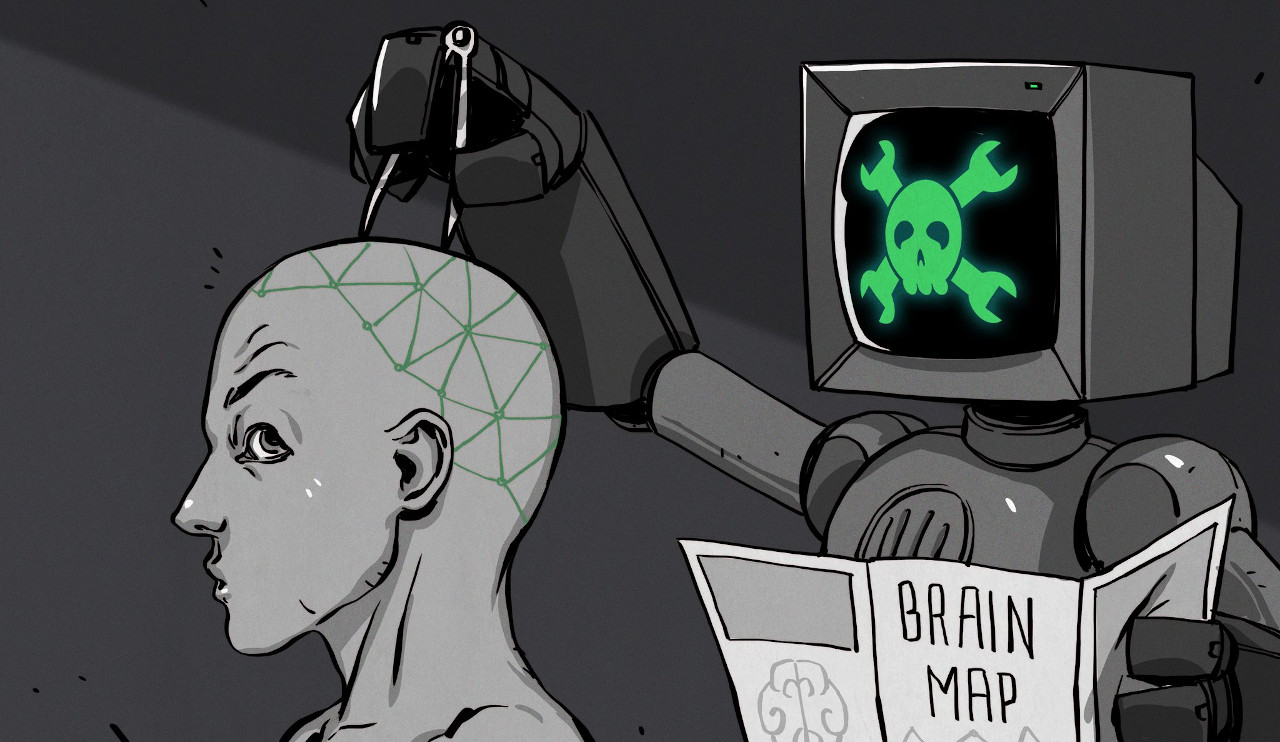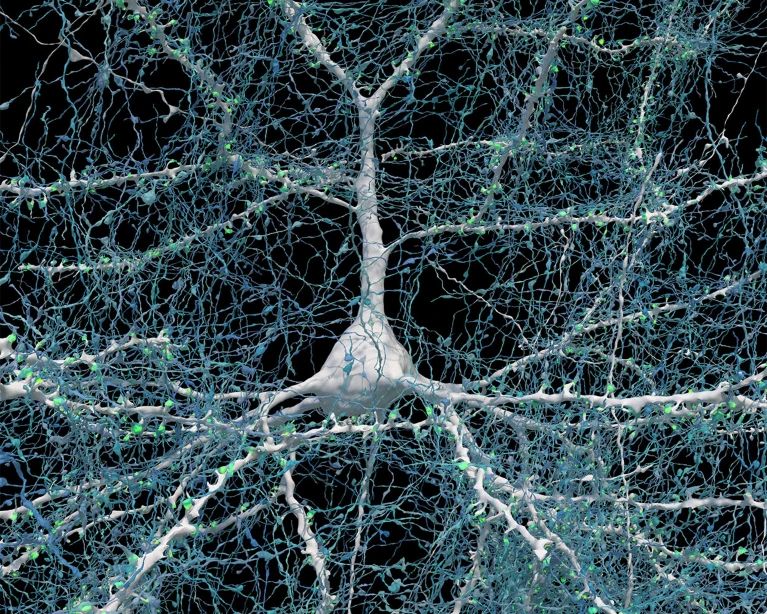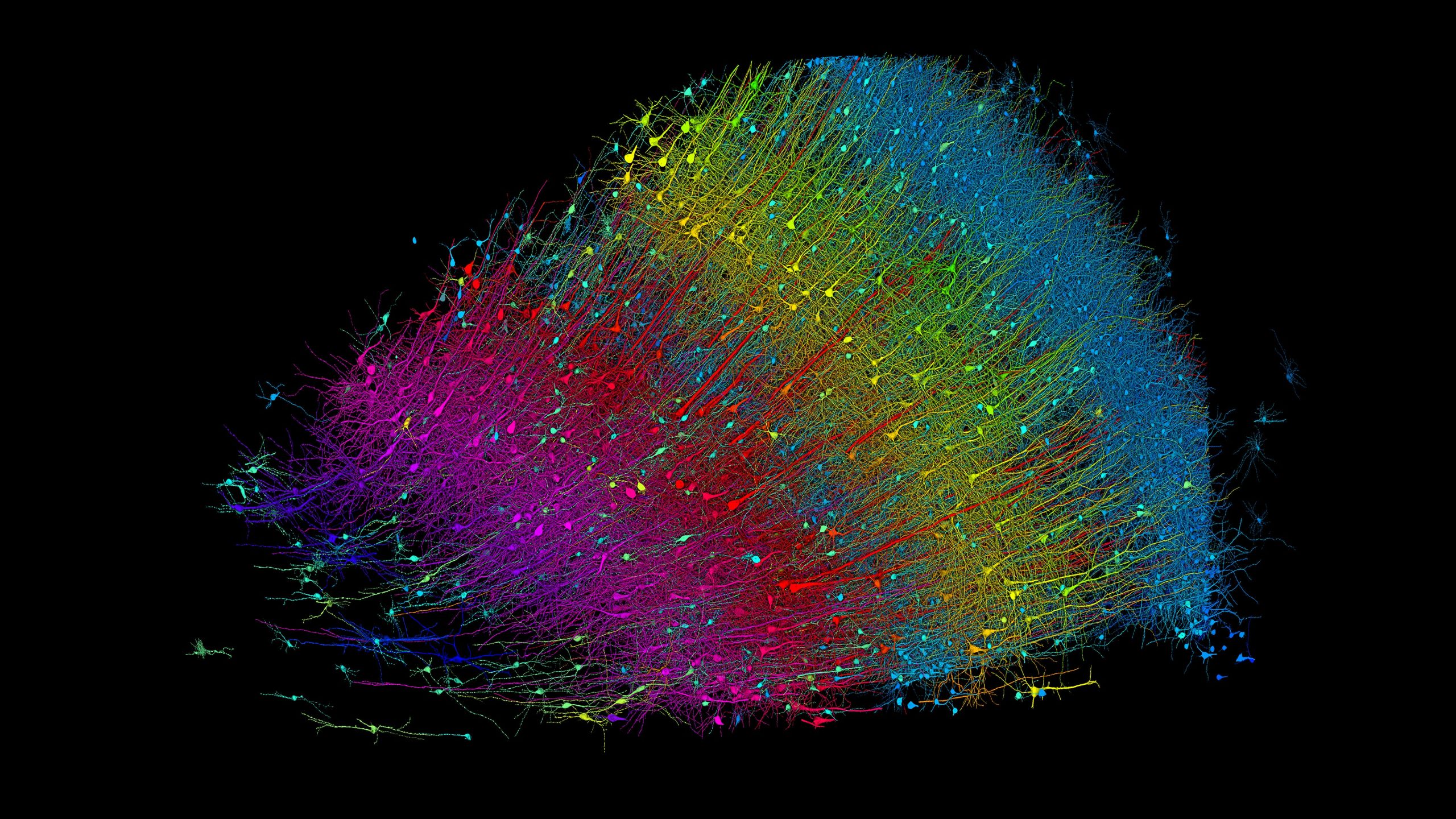Mapping the Human Brain and Where This May Lead Us [Hackaday]

In order to understand something, it helps to observe it up close and study its inner workings. This is no less true for the brain, whether it is the brain of a mouse, that of a whale, or the squishy brain inside our own skulls. It defines after all us as a person; containing our personality and all our desires and dreams. There are also many injuries, disorders and illnesses that affect the brain, many of which we understand as poorly as the basics of how memories are stored and thoughts are formed. Much of this is due to how complicated the brain is to study in a controlled fashion.
Recently a breakthrough was made in the form of a detailed map of the cells and synapses in a segment of a human brain sample. This collaboration between Harvard and Google resulted in the most detailed look at human brain tissue so far, contained in a mere 1.4 petabytes of data. Far from a full brain map, this particular effort involved only a cubic millimeter of the human temporal cortex, containing 57,000 cells, 230 millimeters of blood vessels and 150 million synapses.
Ultimately the goal is to create a full map of a human brain like this, with each synapse and other structures detailed. If we can pull it off, the implications could be mind-bending.
Neurogenesis
In the beginning, there exist just a few newly formed neurons, gradually specializing from more generic cells in the developing embryo into the variety of cells that make up the human brain. Studying the development of this early state into the child and adult connectomes (that is, the map of neural connections in the brain) has provided us with many clues already. The term ‘connectome’ was originally coined in 2005, following the pattern of ‘genome’ at a time when researchers were busy sequencing the full human genome.
The idea is that in order to understand the brain, we must understand the network and not merely the individual neurons or functioning of individual synapses. This is similar to how our understanding of a genome relies on observing how DNA is transcribed into functional building blocks; components which ultimately result in anything from as simple as a single-celled eukaryote, to a functioning human body, or any other lifeform. By observing the way the genome is used in this context, we gain understanding of how both the genome and the cell or body it’s part of fit together.

In the case of a connectome, we have been rather limited in our observation options, as brains do not take that kindly to being studied with e.g. a scanning electron microscope (SEM) while still inside a living body. Thus it is that most studies involve the use of functional magnetic resonance imaging (fMRI), which images brain activity over time. A recent study by Qiongling Li and colleagues in Cell Reports titled “Development of segregation and integration of functional connectomes during the first 1,000 days” used fMRI sets of scans on 665 infants to track the development of their functional connectivity (FC) up to the age of three years, which is when the brain’s structure has largely matured.
Using this dataset, it is possible to mark the segregation of the developing brain into distinct hubs, which form the various cortices and so on, each with distinct functionality. Local connectivity can be tracked using this method, as well as global connectivity between the separate regions, but this does not tell us how exactly the neurons are wired up, nor does it allow us to take a close look at the developing connectome, or the final result in an adult.
Adult Connectome

The brain tissue sample that was analyzed in the aforementioned collaboration study by Google Research and Harvard’s Lichtman Lab came from a 45-year old woman who underwent epilepsy-related surgery (surgical resection of an epileptic focus in the left medial temporal lobe). The study results are described in the research article (paywalled, no prepublication copy found) by Alexander Shapson-Coe and colleagues, as published in Science with the title “A petavoxel fragment of human cerebral cortex reconstructed at nanoscale resolution”. Detailed information on the materials and methods can be found in the (freely available) supplemental material PDF.
This 1 mm3 sample was stained first with tetroxide-thiocarbohydrazide (TCH)-osmium, washed and then stained with 2% uranyl acetate prior to being fixed with epoxy. From this 5019 sections were cut, ranging in thickness from 30 to 33 nm, albeit with issues such as layers breaking up, blunting of the used knife and alignment issues after a knife replacement. This is presumed to have led to some loss of the tissue.
These slices were subsequently imaged with a SEM, leaving the researchers with the task to align and match the features in each layer. This process was handled mostly by machine vision and algorithms such as OpenCV’s SimpleBlobDetector, as well as proprietary Google algorithms. Convolutional neural networks (CNN) to perform tissue and neurite classification as well as myeloid body and data irregularity detection. Ultimately, after a lot more processing, the result was a viewable 3D data set with the individual elements like neurons, glial cells, blood vessels and synapses.
These datasets are publicly available, using the Google Neuroglancer web-based tool for interactive viewing. As noted by the researchers, the merging of the layers is far from perfect, and a lot more proofreading by human reviewers will be needed. Even so, it provides a fascinating glimpse at a world that’s normally impossible for us to observe so clearly.
Mapping Implications
Even in this small tissue sample, the researchers made a number of discoveries that raised questions about normal neural development. In particular, they noticed quaint characteristics, such as a few neurons that had established over 50 connections with each other, as well as knotted dendrites. These were unlike what had been documented before, which raises many questions about whether these might be indicative of some kind of developmental issue or not.
Within this small dataset it’s possible that these are features associated with epilepsy – since this sample was obtained from a person’s brain who suffered from that condition – but without obtaining more data to compare with it will be exceedingly difficult to draw any firm conclusions. This then leaves us for now with both a very exciting outlook and the gloomy realization of how hard it will be expand on this effort.
As the level of detail from this one experiment’s results show, there is a lot that we can likely learn about the brain’s structure and functioning, especially once we manage to characterize even more brain tissue, allowing us to compare and contrast between healthy individuals and those we suffered from a variety of conditions in life. Due to the scanning method used, the tissue has to be either in the form of a biopsy (as in this case), or from a post-mortem donation, which adds its own set of challenges.
The effort required in preparing just this one 1 mm3 sample, the enormous dataset it generated, and the still imperfect post-scan processing and reassembly process poses significant hurdles. Considering that the average adult human brain has a volume of around 1200 cm3 (1,200,000 mm3), the human genome sequencing project suddenly looks like an easy afternoon challenge.
That said, much like the human genome project we will likely figure out ways to optimize the brain mapping project. Once we do, we can expect a flurry of new insights on aspects about the human brain that have puzzled us for centuries, which would absolutely make it worth the trouble.

![mapping-the-human-brain-and-where-this-may-lead-us-[hackaday]](https://i0.wp.com/upmytech.com/wp-content/uploads/2024/05/185475-mapping-the-human-brain-and-where-this-may-lead-us-hackaday.jpg?resize=800%2C445&ssl=1)